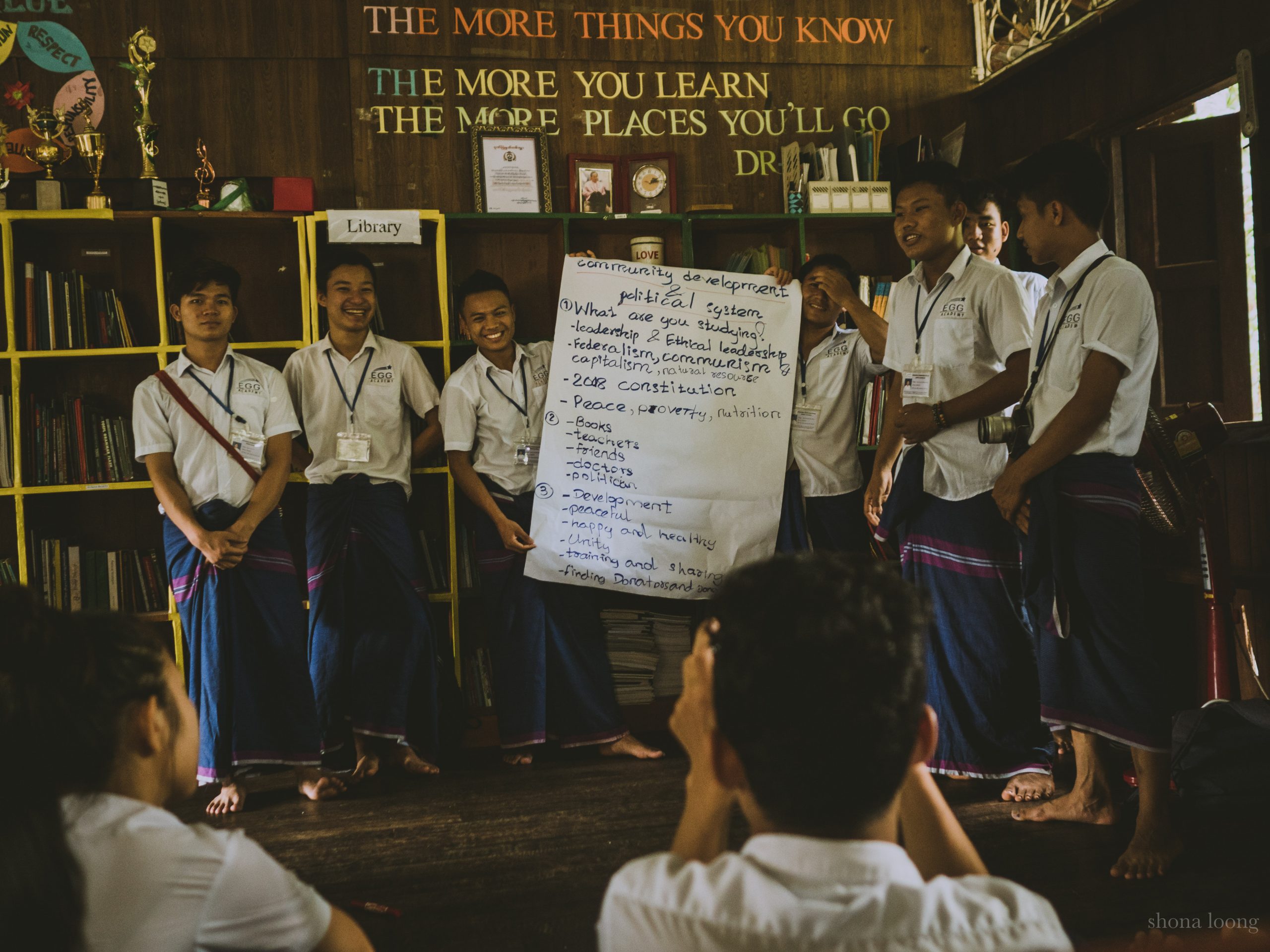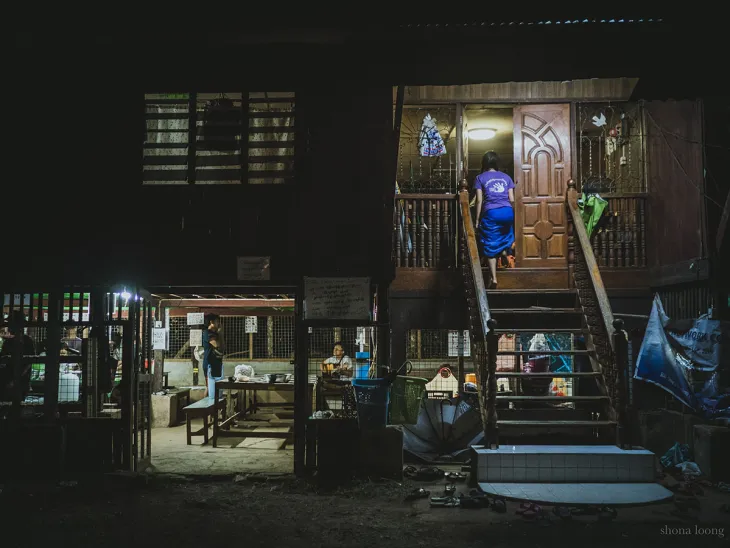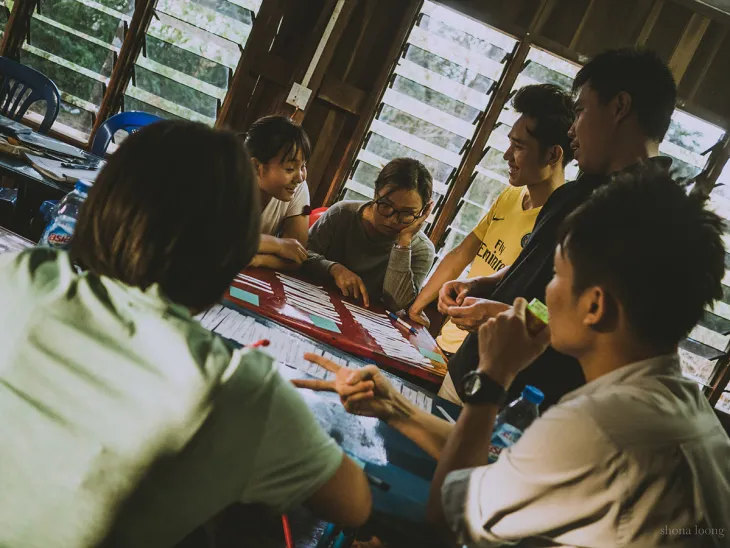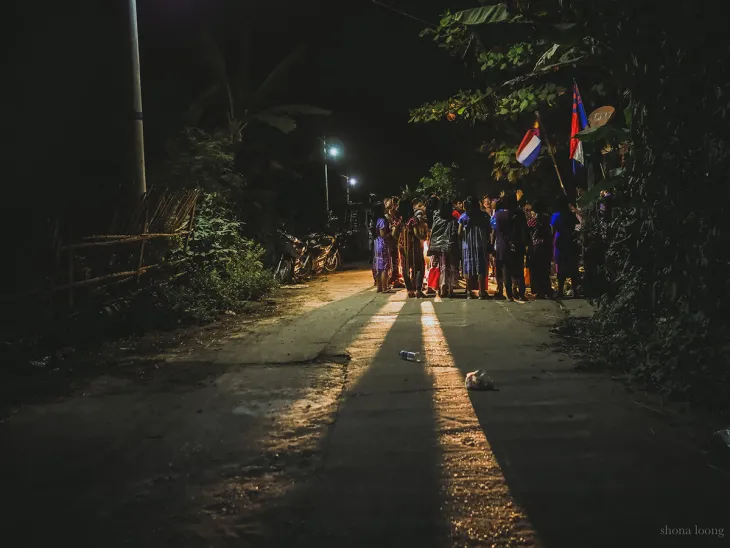
Shona Loong and Gray Rinehart discuss how local leaders in post-secondary schools pave the way for inclusive, critical, and community-based learning.


Post-secondary education originated in the refugee camps on the Thai-Myanmar border. In the early 1990s, nearly ten years since the beginning of large-scale refugee flows from southeast Myanmar to Thailand, the civil war showed no signs of abating. To respond to refugees’ aspirations beyond high school, the Personal Development Course was founded in Mae Ra Mu camp. Post-secondary education grew over the next ten years, with similar schools established in other refugee camps and migrant communities. Several factors account for this rapid expansion. Firstly, refugees could not access Thai schools until 2005, when the Thai government declared that it would extend educational rights to children in Thailand regardless of nationality (Nawarat 2012). This compelled refugee leaders to create an independent education system adapted to the context of protracted displacement, whereby displaced children were entering adulthood in the camps. By the mid-2000s the Karen Refugee Committee Education Entity was formed to standardise the curriculum among Karen schools that were willing to participate. Secondly, post-secondary schools served a political purpose for democracy activists, who had fled to the border after the 1988 student protests, and for the Karen National Union (KNU) leadership, based in Thailand since the loss of their headquarters in Manerplaw in 1994. Post-secondary education ‘has therefore historically taken on a wilfully subversive position’ linked to ethnic politics and Burma’s democracy movement (Maber 2016, 379). The success of schools on the Thai border set precedents for other ethnic groups including, but not limited to the Mon, Karenni, and Shan who developed their own parallel systems of post-secondary education. Some of these were located further inside Thailand, such as in Mae Sot, Chiang Mai, Bangkok, Mae Sariang, Sangkhlaburi, and Mae Hong Son, and were able to access a more multi-ethnic student population. Finally, funding was widely available for these initiatives from donors eager to counteract Myanmar’s military regime (Décobert 2016). The first post-secondaries were funded independently, although by the late 1990s international NGOs began to provide financial support for existing schools and encourage the formation of new ones.[2]
For two decades, border-based post-secondaries nurtured a politics of resistance. However since 2010, donors have shifted their support to in-country transitions, leaving refugee- and migrant-oriented organisations in the lurch. This uncertainty is reflected in a rhetorical question that a Karenni ethnic education leader posed to one of us: ‘Are we preparing for a future in Myanmar, or are we preparing for a future in the camps?’ Myanmar’s faltering peace process makes it difficult for border-based educators— many of whom are themselves first-hand witnesses to state violence—to give up on refugee and migrant education, even as donor funding diminishes. However, the 2012 bilateral ceasefire between the Karen National Union and the Myanmar government, together with a series of loosened laws on freedom of association and censorship, created new opportunities for civil society. In 2012, the Myanmar Community Academies Network (MCAP) was founded, which now consists of four schools: EGG Academy in Karen State, Pinnya Tagar in Kachin State, Level Up Academy in Karenni State, and Cherry Myay Academy in Shan State. Outside of the MCAP network, the post-secondary model has flourished in Myanmar. Organisations such as the Thabyay Education Foundation—which contributed to the success of border-based post-secondary schools through curriculum development and foreign volunteer placements—has moved its headquarters in-country and founded its own post-secondary programmes.[3] Today there are only an estimated 25 post-secondary schools on the Thai side of the border and twice as many inside Myanmar. Schools in Myanmar are based on the template developed on the border but have evolved into something different, in accordance with the constraints and opportunities afforded by Myanmar’s political climate and the vagaries of development funding.

What characterizes Myanmar’s post-secondary sector? These schools typically target high-school graduates of the Myanmar government education system or a parallel system (who may or may not have passed the Myanmar government matriculation exam), teach full-time courses that run for several months or more, and are not-for-profit. For a sector created outside of a single government’s oversight, post-secondary education is astonishingly comprehensive. Taught subjects, including civic education, social science, leadership and management, and English language, are largely consistent between schools, although specific curricula is often iterated over time. Students also acquire technical skills including information technology, community development, and project management. Teachers can access pre-service training and capacity development through local NGOs, minimizing schools’ dependency on foreign teachers. At EGG and other schools in the MCAP network, teachers access technical support and context-appropriate educational materials through the Yangon-based Mote Oo Education. Mote Oo also responds to requests for new materials and trainings from teachers and school leaders, providing support for the direction in which leaders want to take their schools. In the words of a post-secondary principal, these schools and partnership organisations comprise a ground-up “ecosystem of learning” developed in response to the inadequacies of government-led education. What the Ministry of Education (MOE) does not provide, post-secondaries will do themselves. Their critiques of the MOE are at least twofold. Firstly, post-secondary schools replace rote learning with critical thinking. Secondly, post-secondary schools reject the ‘Burmanizing’ agenda of MOE schools by providing opportunities for non-Burman students to discuss history, peace, and identity on their own terms.
“Community” is the central concept around which post-secondary education is organised. Whereas formal education is generally understood to promote citizenship, Myanmar’s post-secondary schools advance an alternative form of political belonging, pegged to the community rather than the nation-state. EGG for instance envisions their students as ‘agents of positive change throughout our communities.’ Geographically, these communities refer to remote and rural areas throughout Karen State. Despite living in Hpa-An throughout the two-year programme, the programme is organised such that students maintain close ties with their home villages. Students organise service learning projects in these areas, visit hundreds of households during Karen New Year, and must complete a month-long needs assessment project close to their homes. Politically, a community focus connotes EGG’s independence from both the Myanmar government and ethnic armed groups. The school leadership emphasises that their primary allegiance is to people who may or may not identify with either form of authority. A focus on “community” also allows for some distance from the concept of ethnicity. EGG’s vision is for the future of communities in Karen State, rather than communities of Karen people. It makes a concerted attempt at ethnic diversity among its student cohort although most are Karen by virtue of the school’s location. This is a challenging, delicate position to take, and one that is constantly under negotiation. In so doing, the school treads a careful path between debates about peace, often centred on ethnicity, and debates about federalism, centred on Myanmar’s political geography of “states” and “regions.”

Having developed as a response to a particular socio-political milieu, the future of post-secondary schools depends on the twists and turns of Myanmar politics. One issue that preoccupies post-secondary school leaders is maintaining a delicate balance between a desire for legitimacy and a desire for autonomy. Myanmar’s reform of the Private School Law (PSL) could make registration of Myanmar’s post-secondaries possible, but a post-secondary principal in Kachin State fears that ‘this law kills creativity and kills innovation,’ as the PSL imbues State and Region governments with the power to monitor registered institutions. Unless Myanmar takes sincere steps towards devolved federal governance, post-secondary leaders will doubt the possibility of establishing formalised relationships with a state government that respects their visions for alternative education and connections with local communities. At present, school leaders resolve their desire for accreditation by turning elsewhere; EGG for instance incorporates an organisational development course provided by Payap University in Thailand. Another issue is the sustainability of the post-secondary sector. Having witnessed the withdrawal of funding along the Thai border, school leaders are wary of donor dependence. Some are exploring alternative paths, such as income generation, but worry about placing too many burdens on the “communities” that provide schools’ raison d’être. Finally, post-secondary leaders look to professionalise the sector. This will not only increase the quality of post-secondary education, but—as another principal in Kachin State puts it—post-secondaries ‘need more human resources and professionalization because there is a risk if the MOE sets up new, strict guidelines.’ Once again, the post-secondary sector strives to navigate the restrictive policies imposed by the MOE while maintaining its autonomy. This implies that the MOE sees the post-secondary sector as an object to be managed, restricted, and monitored, rather than valued for how it enriches Myanmar’s fraught educational landscape.
Community-focused education provides a vital counterpoint to the nation-state-centric MOE curriculum. It allows promising young adults in Myanmar to acquire a high-quality education while maintaining their sensitivity to local concerns, especially in remote, marginalised areas. The challenge here is to continue to value communities without descending into parochialism. Can post-secondary students be taught to understand how communities relate to one another within Myanmar’s wider socio-political context? And conversely, what can the MOE and other education actors in Myanmar learn from the modes of political belonging engendered through post-secondary education? Can the sector and its graduates—in the words of a post-secondary leader in Karen State—be valued for offering ‘local solutions to country-wide problems’? Answering these questions is an enormous but necessary task if Myanmar is to pursue an inclusive path towards reform.
Shona Loong is a DPhil student at the University of Oxford, where she is a member of Christ Church College and part of the School of Geography and the Environment. Her research is about civil society, governance, and development across government-, mixed-, and KNU-controlled areas in Karen State since the 2012 ceasefire.
Gray Rinehart works as an Education Designer with Mote Oo Education in Yangon. Since 2012, he has worked with numerous adult education providers across Myanmar, providing technical support in their provision of education. He recently presented on “Post-Secondary Education Leadership in 21st Century Myanmar” at the 19th UNESCO-APEID International Conference.
Notes
Like This Article
September 26, 2024
September 16, 2024
June 18, 2024